Mazda 2: How To Use This Manual
Range of Topics
- This manual contains procedures for performing all required service
operations. The procedures are divided into the following five basic
operations:
- Removal/Installation
- Disassembly/Assembly
- Replacement
- Inspection
- Adjustment
- Simple operations which can be performed easily just by looking at the vehicle (i.e., removal/installation of parts, jacking, vehicle lifting, cleaning of parts, and visual inspection) have been omitted.
Service Procedure
Inspection, adjustment
- Inspection and adjustment procedures are divided into steps. Important points regarding the location and contents of the procedures are explained in detail and shown in the illustrations.
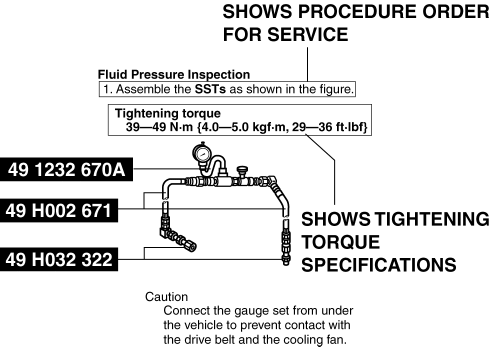
Repair procedure
1. Most repair operations begin with an overview illustration. It identifies the components, shows how the parts fit together, and describes visual part inspection. However, only removal/installation procedures that need to be performed methodically have written instructions.
2. Expendable parts, tightening torques, and symbols for oil, grease, and sealant are shown in the overview illustration. In addition, symbols indicating parts requiring the use of special service tools or equivalent are also shown.
3. Procedure steps are numbered and the part that is the main point of that procedure is shown in the illustration with the corresponding number. Occasionally, there are important points or additional information concerning a procedure. Refer to this information when servicing the related part.

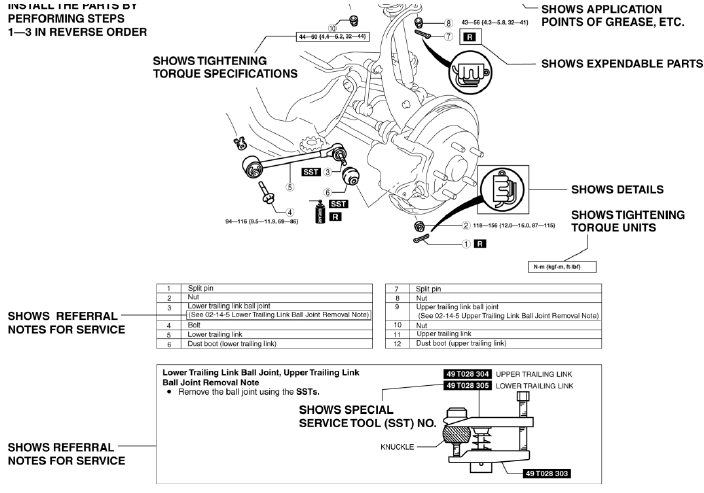
Symbols
- There are nine symbols indicating oil, grease, fluids, sealant, and the use of SST or equivalent. These symbols show application points or use of these materials during service.
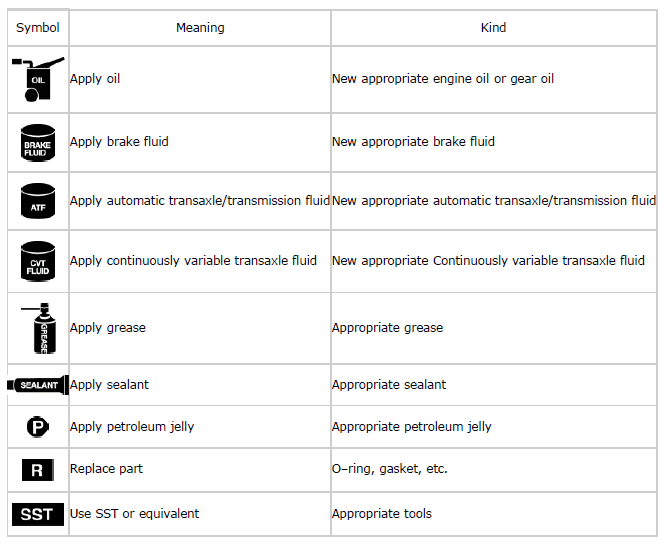
Advisory Messages
- You will find several Warnings, Cautions, Notes, Specifications and Upper and Lower Limits in this manual.
Warning
- A Warning indicates a situation in which serious injury or death could result if the warning is ignored.
Caution
- A Caution indicates a situation in which damage to the vehicle or parts could result if the caution is ignored.
Note
- A Note provides added information that will help you to complete a particular procedure.
Specification
- The values indicate the allowable range when performing inspections or adjustments.
Upper and lower limits
- The values indicate the upper and lower limits that must not be exceeded when performing inspections or adjustments.
Troubleshooting Procedure
Basic flow of troubleshooting
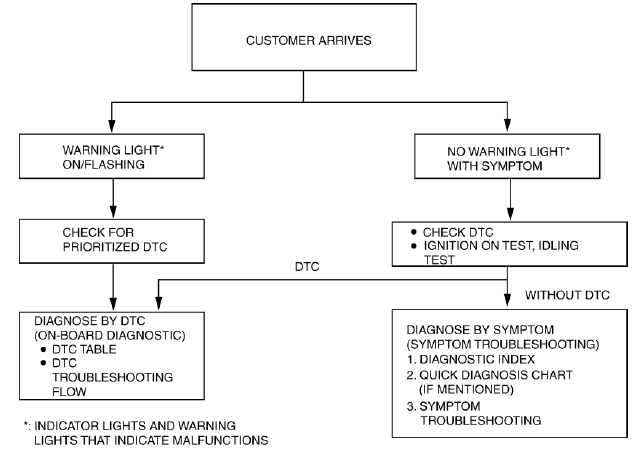
DTC troubleshooting flow (on-board diagnostic)
- Diagnostic trouble codes (DTCs) are important hints for repairing malfunctions that are difficult to simulate. Perform the specific DTC diagnostic inspection to quickly and accurately diagnose the malfunction.
- The on-board diagnostic function is used during inspection. When a DTC is shown specifying the cause of a malfunction, continue the diagnostic inspection according to the items indicated by the on-board diagnostic function.
Diagnostic index
- The diagnostic index lists the symptoms of specific malfunctions. Select the symptoms related or most closely relating to the malfunction.
Quick diagnosis chart (If mentioned)
- The quick diagnosis chart lists diagnosis and inspection procedures to be performed specifically relating to the cause of the malfunction.
Symptom troubleshooting
- Symptom troubleshooting quickly determines the location of the malfunction according to symptom type.
Procedures for Use
Using the basic inspection (transmission/transaxle)
- Perform the basic inspection procedure before symptom troubleshooting.
- Perform each step in the order shown.
- The reference column lists the location of the detailed procedure for each basic inspection.
- Although inspections and adjustments are performed according to the reference column procedures, if the cause of the malfunction is discovered during basic inspection, continue the procedures as indicated in the action column.
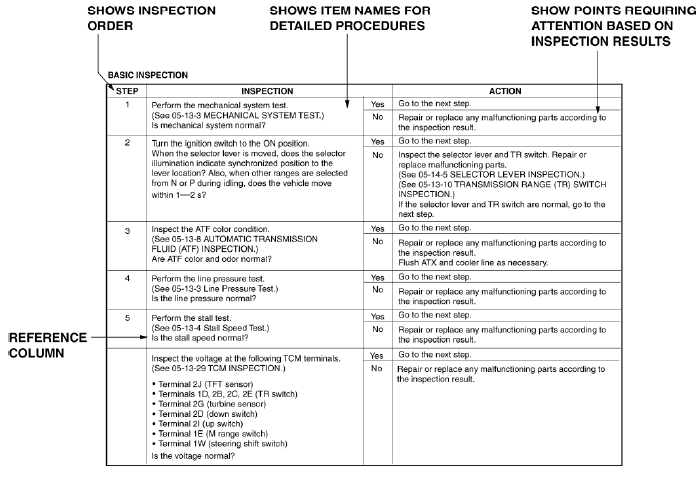
Using the DTC troubleshooting flow
- DTC troubleshooting flow shows diagnostic procedures, inspection methods, and proper action to take for each DTC.

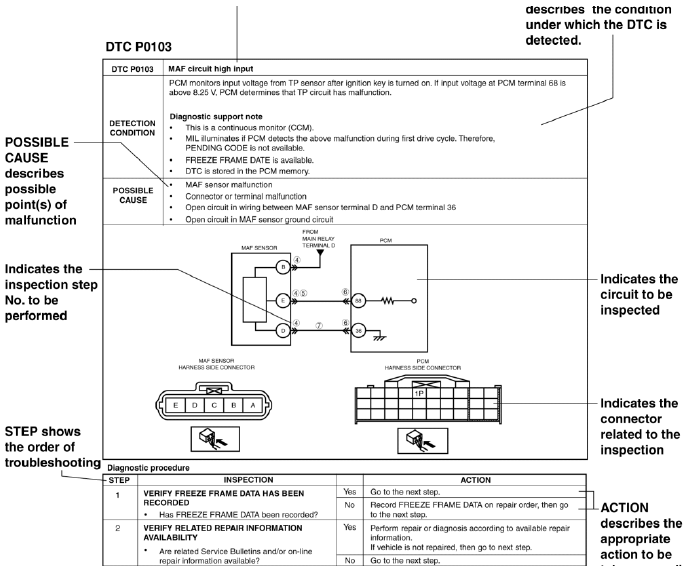

Using the diagnostic index
- Malfunction symptoms are listed in the diagnostic index under symptom troubleshooting.
- The exact malfunction symptoms can be selected by following the index.
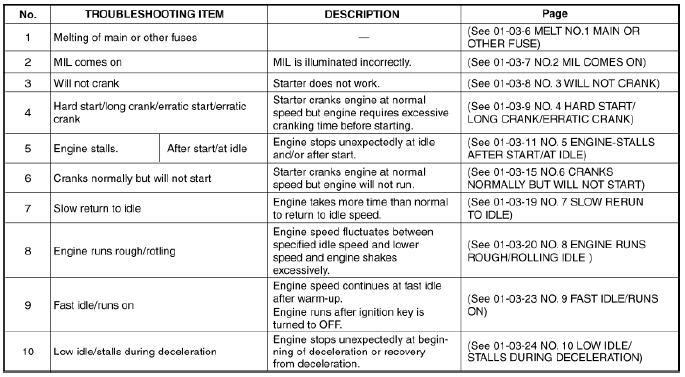
Using the quick diagnosis chart
- The related malfunction cause can be understood.
- The relation between the malfunction symptom and cause is indicated.
- The relation between the malfunction symptom and cause can be detected quickly, and if multiple malfunction symptoms occur, the area which is the common cause among the multiple malfunctions can be specified.
- The effective inspection procedure for the malfunction cause specified from the malfunction symptoms can be selected using the inspection procedure chart.
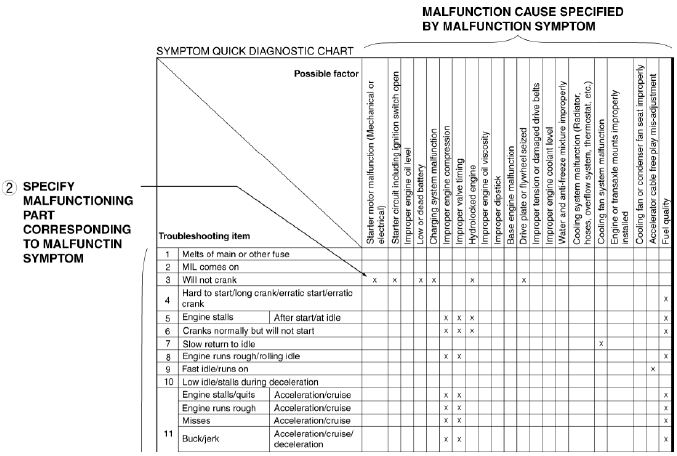
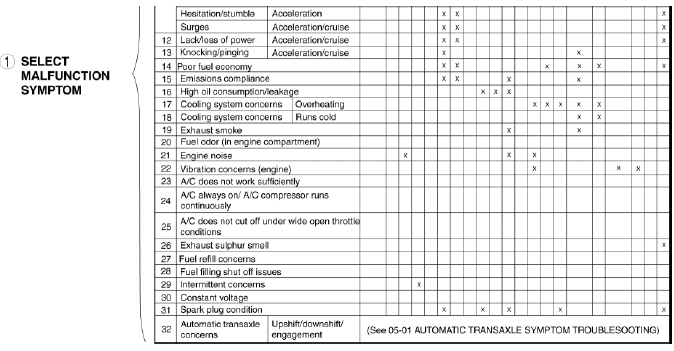
Using the symptom troubleshooting
- Symptom troubleshooting shows diagnostic procedures, inspection methods, and proper action to be taken for each trouble symptom.
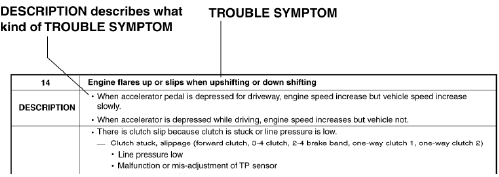
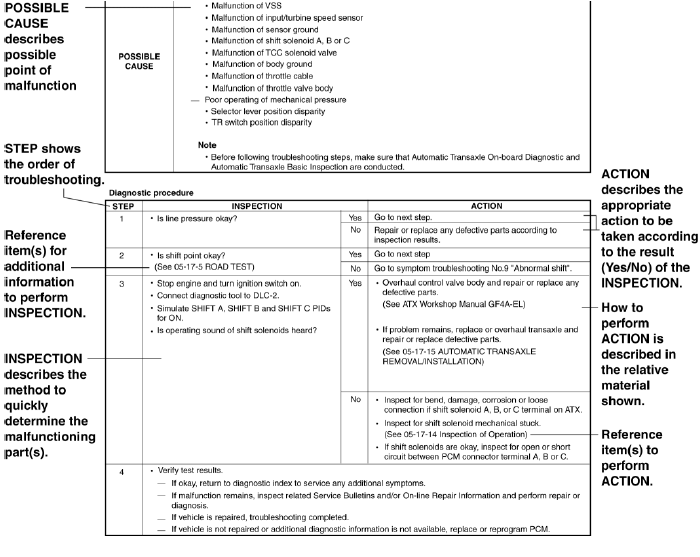
Units
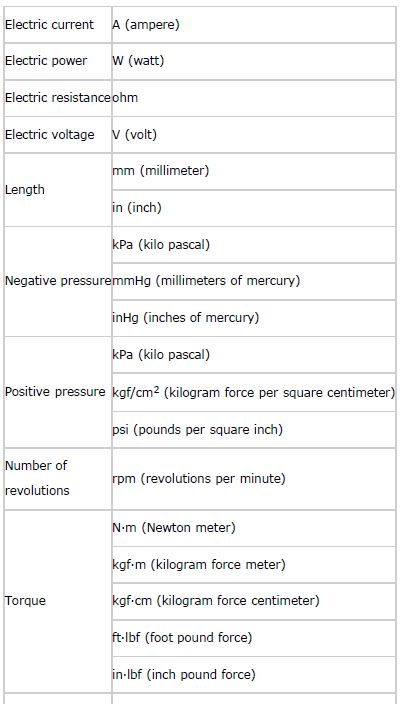
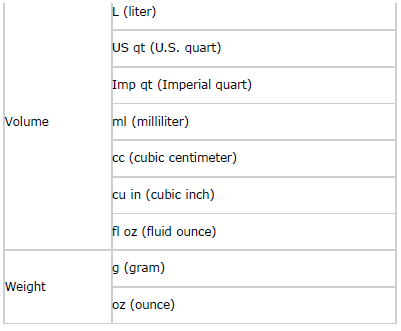
Conversion to SI Units (SystREAD NEXT:
Injury/damage Prevention Precautions
Depending on the vehicle, the cooling fan may operate suddenly even when
the ignition
is switch to off. Therefore, keep hands and tools away from the cooling
 Service Cautions
Service Cautions
Electrical Parts
Battery cable
Before disconnecting connectors or removing electrical parts, disconnect
the negative
battery cable.
Wiring Harness
To remove the wiring harness from the clip i
 Electrical System
Electrical System
Jacking Positions
WARNING:
Improperly jacking a vehicle is dangerous. The vehicle can slip off the
jack and cause serious injury. Use only the correct front and rear
jacking points and block the
 Jacking Positions, Vehicle Lift (2 Supports) and Safety Stand (Rigid Rack)
Positions
Jacking Positions, Vehicle Lift (2 Supports) and Safety Stand (Rigid Rack)
Positions
